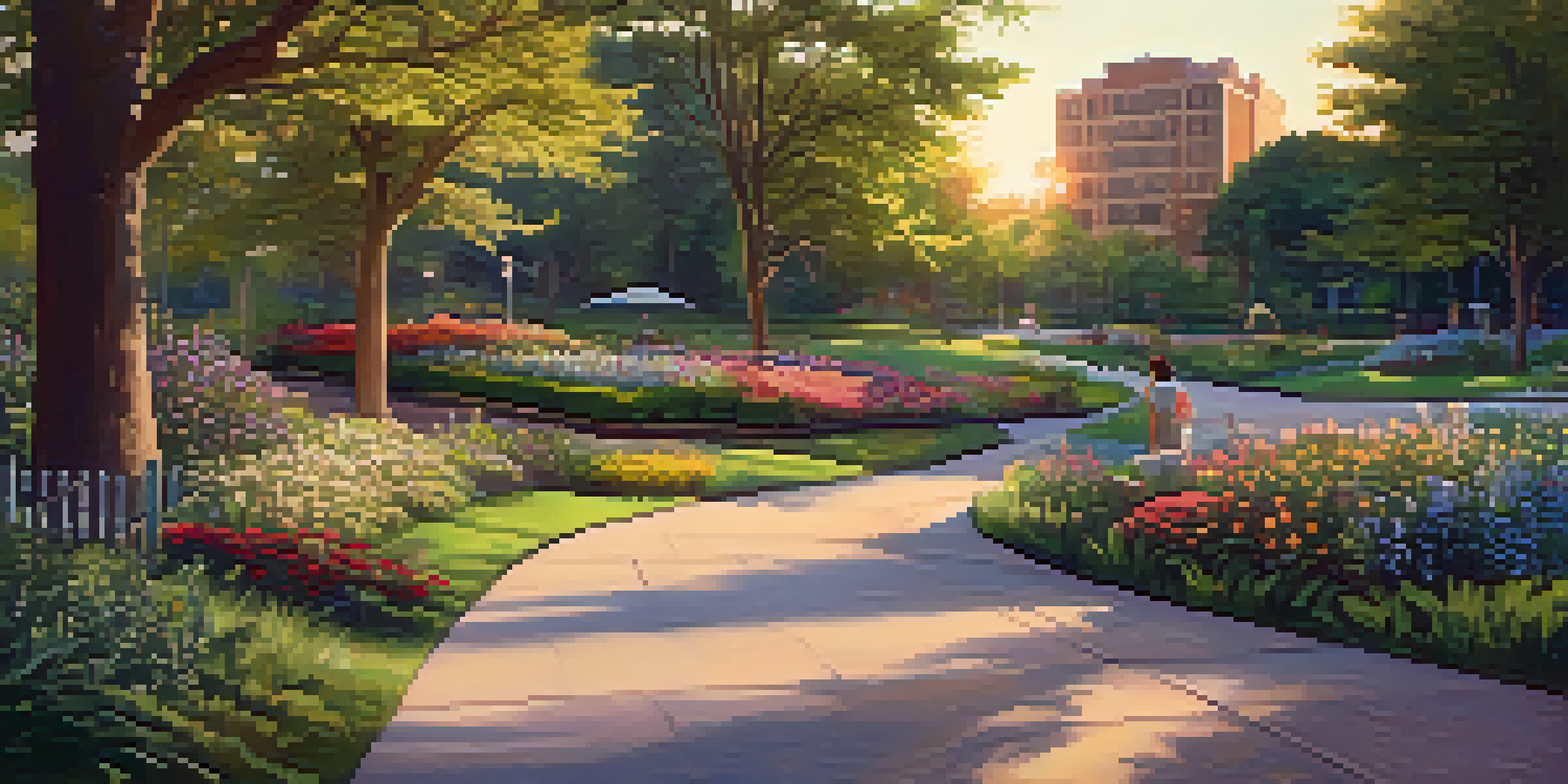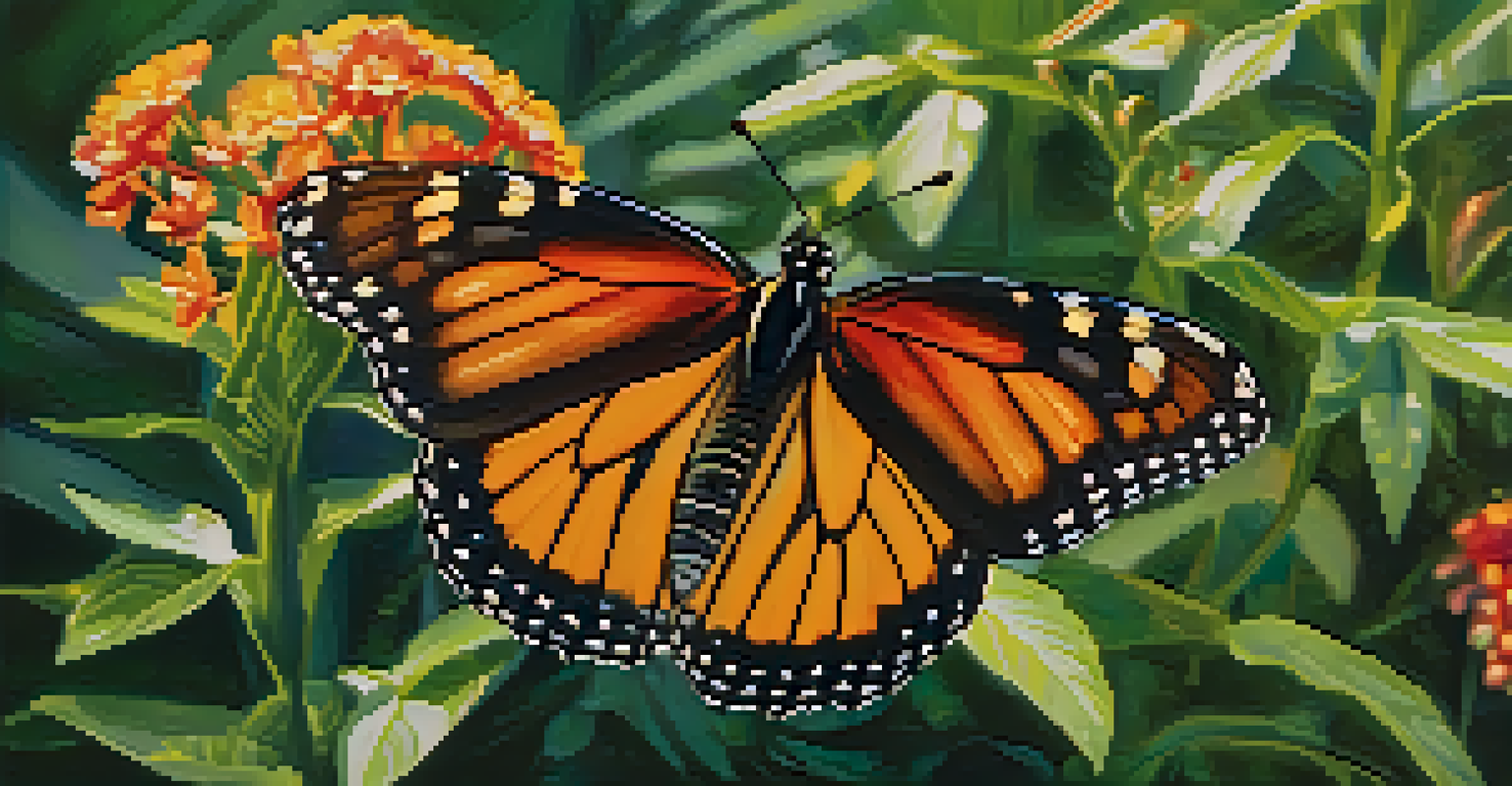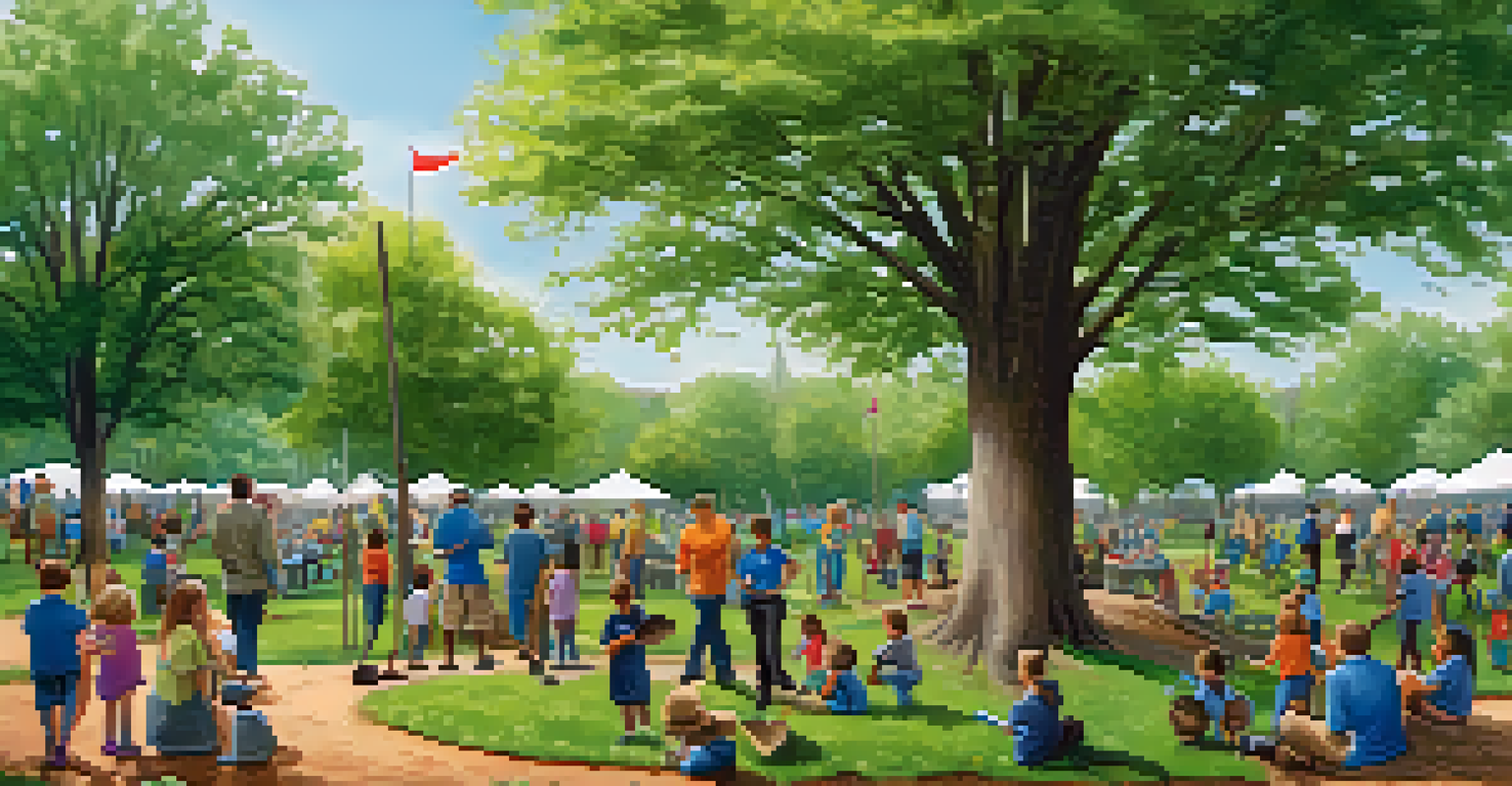The Role of Urban Green Spaces in Charlotte's Wildlife Habitat

Understanding Urban Green Spaces in Charlotte
Urban green spaces are essential areas in cities that provide natural environments, such as parks, gardens, and greenways. In Charlotte, these spaces serve not only as recreational areas for residents but also as habitats for various wildlife species. As urban development continues to expand, recognizing the importance of these green spaces becomes crucial for maintaining biodiversity.
In every walk with nature one receives far more than he seeks.
These areas play a vital role in connecting fragmented habitats, allowing wildlife to thrive within an urban setting. For instance, parks like Freedom Park and the Little Sugar Creek Greenway are not just beautiful spots for picnics but also crucial corridors for birds, insects, and small mammals. By understanding the significance of these spaces, we can appreciate their role in the city's ecosystem.
Furthermore, urban green spaces contribute to the overall well-being of Charlotte's residents. They offer recreational opportunities, promote mental health, and provide educational experiences about nature and conservation. This dual benefit highlights why maintaining and expanding these spaces should be a priority for city planners and the community alike.
The Importance of Biodiversity in Urban Areas
Biodiversity refers to the variety of life found in a given area, and it plays a critical role in sustaining ecosystems. In urban environments like Charlotte, maintaining biodiversity is essential for ecological balance and resilience. Urban green spaces can foster diverse flora and fauna, which in turn supports various ecological functions, such as pollination and seed dispersal.

For example, native plants in Charlotte's parks attract a range of pollinators, including bees and butterflies, which are vital for food production. The presence of diverse animal species also helps to control pests naturally, reducing the need for chemical pesticides. This harmonious relationship between plants and animals exemplifies how urban green spaces can contribute to a healthier city environment.
Urban Green Spaces Boost Biodiversity
Charlotte's urban green spaces provide essential habitats for diverse wildlife, supporting ecological balance and resilience.
Moreover, biodiversity can enhance the aesthetic appeal of urban areas, making cities more attractive to residents and visitors. A diverse range of plants can create vibrant landscapes that change with the seasons, fostering a deeper connection between people and nature. By prioritizing biodiversity in urban planning, Charlotte can create spaces that are not only functional but also beautiful.
Wildlife Species Found in Charlotte's Green Spaces
Charlotte's urban green spaces are home to a variety of wildlife species, each playing a unique role in the ecosystem. Common sightings include birds such as cardinals, blue jays, and even the occasional hawk soaring overhead. Small mammals, like squirrels and raccoons, also thrive in these habitats, showcasing the adaptability of wildlife in urban settings.
The best time to plant a tree was twenty years ago. The second best time is now.
In addition to birds and mammals, these green spaces provide critical habitats for reptiles and amphibians, such as frogs and turtles. Wetlands in parks like Reedy Creek Park serve as breeding grounds for these species, underscoring the importance of preserving such environments. By recognizing the diverse wildlife present in these areas, we can foster a greater appreciation for the natural world.
Moreover, the presence of wildlife in urban areas can serve as an educational tool for residents. Observing animals in their natural habitat encourages curiosity and awareness about local ecosystems. Schools and community groups can use these green spaces for environmental education, teaching future generations about the importance of wildlife conservation.
Challenges Facing Urban Green Spaces in Charlotte
Despite their importance, urban green spaces in Charlotte face several challenges that threaten their ecological integrity. Urbanization often leads to habitat fragmentation, where continuous habitats are broken into smaller, isolated patches. This fragmentation can make it difficult for wildlife to find food, mates, and shelter, ultimately impacting their survival.
Additionally, pollution from nearby roads and industrial areas can degrade the quality of these green spaces. Contaminants can affect soil health and water quality, posing risks to both wildlife and plant life. Addressing these challenges requires concerted efforts from community members, city officials, and environmental organizations to develop sustainable management practices.
Community Engagement is Key
Local residents play a crucial role in preserving urban green spaces through participation in conservation efforts and advocacy.
Furthermore, climate change adds another layer of complexity to the preservation of urban green spaces. Changes in temperature and precipitation patterns can alter the habitats that wildlife depend on. By actively monitoring and adapting to these changes, Charlotte can take proactive steps to ensure that its green spaces remain viable for future generations.
Community Engagement in Preserving Green Spaces
Community involvement is crucial for the preservation and enhancement of urban green spaces in Charlotte. Local residents can participate in clean-up events, tree planting initiatives, and educational programs that promote conservation. Such engagement not only benefits the environment but also fosters a sense of community pride and ownership.
Organizations like TreesCharlotte and the Charlotte Parks and Recreation Department often host events aimed at increasing public awareness and involvement. These initiatives provide opportunities for residents to connect with nature while contributing to the health of their local ecosystem. The more people engage, the more they understand the value of these spaces.
Moreover, community input can play a significant role in urban planning decisions. Residents who advocate for green space preservation can influence policy changes that prioritize the environment. By working together, communities can ensure that Charlotte’s green spaces are maintained and improved for both wildlife and future generations.
The Role of Education in Promoting Green Spaces
Education is a powerful tool in promoting the importance of urban green spaces and their role in wildlife habitats. Schools and local organizations can develop programs that teach students about the significance of biodiversity and conservation efforts. By instilling these values at a young age, children develop a lifelong appreciation for nature.
Field trips to local parks and nature reserves can offer firsthand experiences that bring classroom lessons to life. Students can learn about local wildlife, plant species, and the importance of preserving these environments. Such experiences can foster a sense of stewardship, encouraging future generations to advocate for green spaces.
Education Promotes Environmental Stewardship
Educational programs foster a deeper understanding of biodiversity and conservation, encouraging future generations to value and protect green spaces.
Additionally, workshops and community events can provide adults with knowledge about sustainable practices and the role they can play in conservation efforts. By creating educational opportunities for all ages, Charlotte can cultivate an informed community that actively participates in preserving its urban green spaces.
Future Directions for Urban Green Spaces in Charlotte
Looking ahead, Charlotte has the opportunity to enhance its urban green spaces to better support wildlife habitats. This can involve creating more interconnected green corridors that allow wildlife to move freely between areas. By prioritizing these connections, the city can promote biodiversity and improve ecological resilience.
Furthermore, incorporating native plant landscaping in new developments can create more sustainable environments for local wildlife. Native plants are better adapted to the local climate and require less maintenance, making them an ideal choice for urban settings. This approach not only benefits wildlife but also enhances the overall aesthetic of neighborhoods.

Lastly, ongoing collaboration between city officials, conservation organizations, and the community is essential for the future of urban green spaces in Charlotte. By maintaining open lines of communication and emphasizing sustainability, the city can ensure that its green spaces thrive for generations to come. Together, we can create a greener, healthier Charlotte.